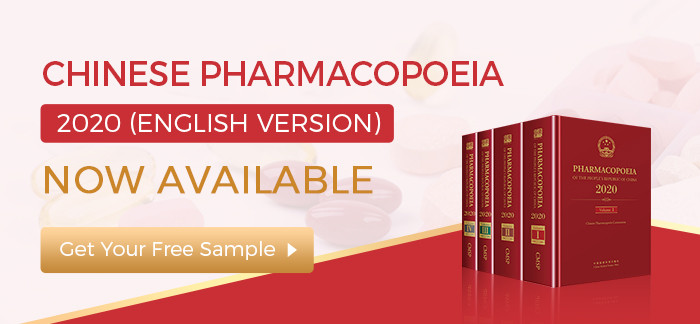2019 Compliance Review: Cosmetic Regulatory Updates in China
The development of global cosmetics industry has reached a new height with the tide of economic globalization. China’s beauty industry is in a booming stage, taking for the first time the post of world’s second largest cosmetics market. As the fastest growing country in the past decade, China has now joined the United States and Japan, ranking among the top three global consumers of cosmetics. Not only this, but according to a number of studies, it is emerging markets such as China, India, and South Korea that have led global growth over the past decade.
Over the past few years, China’s online cosmetics market has been growing at a fast pace, driven by social e-commerce, the strong forces of social media and the influence of the internet celebrities. The total turnover of T-mall on November 11 (known as Single’s Day in China), 2019 was 268.4 billion RMB. 36 beauty brands sold over 100 million in 2 hours and the new power of consumption broke out on November 11. 61% of consumers consider social media platforms as an important front for them to buy cosmetics, among which the probability of 95/00 generation is 76.6%. The development of cross-border e-commerce has become a driving force for the growth of cosmetics consumption.
More favorable national policies have also become driving forces to promote the evolution of China’s cosmetics industry. Since November 2018, all imported non-special cosmetics have adopted a filing system to replace the previous registration system, which has accelerated the pace of overseas cosmetics entering the Chinese market. As far as 2019 is concerned, more than 14,000 imported non-special-use cosmetics have been filed Shanghai accounted for about 60%, while Guangzhou and Zhejiang Province represented about 10% each. The shortened filing time has attracted many international cosmetics brands, while the benefits of the cross-border e-commerce have allowed Chinese consumers the chance to try more popular overseas cosmetics brands through their online shopping platforms.
National Medical Products Administration(NMPA) Releases Notice No.12 of 2019, Adding 2 New Animal Alternative Test Methods
On March 22, 2019,NMPA released 9 testing methods which the Cosmetics Safety Technical Specification (2015 Edition) were incorporated. Among them, 5 testing methods are new and 4 are revisions. Two of the testing methods are animal alternative: Short Time Exposure in Vitro Test Method (STE) and In Chemico Skin Sensitization: Direct Peptide Reactivity Assay (DPRA).
NMPA accepted 3 animal alternative testing methods so far. Cosmetic raw material manufacturers are advised to pay close attention, as in toxicology test methods, the bacterial reverse mutation test and teratogenicity test were subject to revision. Also note that the above released methods have taken effect from January 1, 2020.
Measures for the Filing of Non-Special Use Cosmetics (Draft for comments)
On May 27, 2019, NMPA released the Measures for the filing of Non-Special Use Cosmetics (Draft for comments) for public comments.
In the draft, the government put forward the issue of exempting animal experiments for imported non-special use cosmetics for the first time, a milestone for the government since the exemption of animal experiments for domestic non-special use cosmetics in 2014. From this draft, our team of experts observes that easing market access, enhancing post-supervision and strengthening enterprise self-discipline is still the main focus of cosmetics supervision.
Notice on the Continuation for Special-Use Cosmetic Production Licenses (Draft for Comments)
On May 29, 2019, China’s NMPA published a notice on the Renewal for Special-Use Cosmetic Licenses which came into effect on June 30, 2019.
After nearly half a year soliciting opinions, the renewal of the production license for special-use cosmetics became a fact. The new application process has been further simplified, and the speed to receive approval also improved significantly. According to the announcement, it should only take 15 working days from the time of submission of the application to approval which is significantly shorter than before.
Working Rules for Cosmetic Registration and Filing Testing (No. 72 2019)
NMPA published Working Rules for Cosmetic Registration and Filing Testing, indicating that qualifications by the original registered institute will cease to be effective as from November 1, 2019, Testing institutions can get qualified by submitting relevant information through the system as long as they meet CMA requirements and are proved to have all corresponding testing capabilities.The inspection and testing institution will have to upload the report to the information system, and record the result. The system is associated with the registration and filing system for easy review NMPA adjusted the focus of their work from the previous emphasis on designation to their current emphasis on supervision and opening up access to testing institutions . This means more testing institutions will be able to perform cosmetics tests. This makes a more comprehensive use of society’s resources, also contributing to a shorter testing period, all in all positive news for enterprises in the field.
NMPA Publishes Interim Provisions on the Administration of Overseas Inspection of Cosmetics (Draft for Comments)
On November 22, 2019, NMPA Publishes Interim Provisions on the Administration of Overseas Inspection of Cosmetics (Draft for Comments). In order to clarify the requirements and content of overseas inspections, in accordance with the principles of fair competition, domestic-foreign standards consistency. Focusing on relevant work procedures for overseas inspections of pharmaceutical and medical devices, the “Interim Provisions on the Administration of Overseas Inspection of Cosmetics” (hereinafter referred to as the Provisions) were formulated to ensure a standardized open and fair overseas inspection standard, as well as objective, fair and effective inspection results.
It is actually not difficult to see that the government wants to level regulatory standards for the import of non-special-use cosmetics and the domestic non-special-use cosmetics through this draft. At the same time, the Provisions also emphasized that overseas inspections should be based on the principle of risk control. Priority should be given to discovering relevant issues in product registration, inspection, adverse reaction monitoring, complaint reporting, etc., as well as large product imports and more consumption in the domestic market. Also, higher impact companies will be a focus for inspection work. In this sense, it is expected that large foreign cosmetics companies may attract of more attention, after all “with great power comes great responsibility”.




